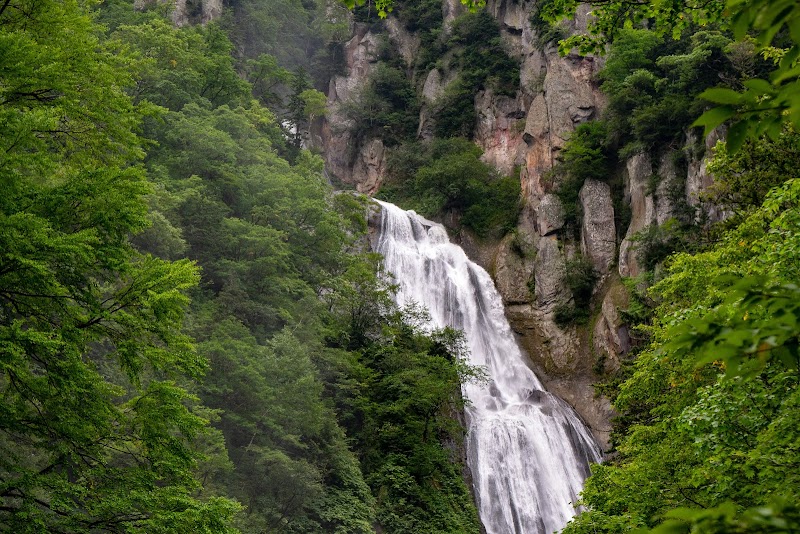
Asahikawa Winter Festival: A Frosty Playground of Ice and Snow in Hokkaido
The Asahikawa Winter Festival in Hokkaido offers a striking blend of massive ice sculptures, lively winter activities, and rich local culture. Experience winter’s force firsthand while navigating icy paths and vibrant festival grounds, all set within one of Japan’s coldest cities.
Wear Grippy Footwear
Icy surfaces make traction vital. Choose boots with good tread or add crampon accessories for safe footing on snow and ice.
Dress in Layers
Temperatures fluctuate between early morning chills and daytime activity warmth. Layering ensures comfort and easy temperature regulation.
Hydrate Frequently
Cold air dries out your respiratory system faster than you expect. Carry insulated bottles with warm drinks or water and sip regularly.
Plan for Nighttime Visits
Illuminations reveal details of ice sculptures invisible by day. Allocate time after dusk but dress even warmer due to lower temperatures.
Asahikawa Winter Festival: A Frosty Playground of Ice and Snow in Hokkaido
Every February, Asahikawa, the heart of Hokkaido, transforms into a realm sculpted by winter’s fierce hands. The Asahikawa Winter Festival is not just a display of ice and snow — it’s a dynamic encounter with cold that dares visitors to appreciate winter’s raw power. Sprawled across multiple venues, the festival showcases ice castles stretching skyward, enormous snow sculptures challenging gravity, and intricate ice carvings that shimmer beneath arc lights.
This event isn’t simply about admiring frozen art; it’s a practical playground. The icy surfaces invite careful steps, urging sturdy footwear and cautious movement. Paths between sites wind through crisp winter air filled with the sound of laughter and distant music, punctuated by the occasional crunch of packed snow underfoot.
The main venue, Tokiwa Park, features massive ice slides that beckon children and adults alike. Nearby, the Heiwa-dori shopping arcade pulses with warm shops offering local crafts and hot drinks to rehydrate and thaw the bones. The city itself stands as a sturdy backdrop, with low buildings blanketed in snow, their rooftops dripping icicles like natural chandeliers.
Planning your visit? Expect temperatures to flirt between minus 5 to minus 15 degrees Celsius. Dress in insulated layers, with waterproof outerwear to guard against snow flurries and occasional wind gusts that don’t hesitate to bite. Hydration is key — cold air can dry out your system faster than you’d guess, so sip steadily. Arriving early in the day gives you clearer views and less crowding, especially important when navigating icy paths.
The festival unfolds over four days, offering nighttime illuminations that paint the ice in ethereal colors, revealing details lost in daylight. Photographers will find crisp contrasts and reflective surfaces that act like natural filters. For the adventurous, carvings of mythical creatures seem to animate under shifting lights, providing a playful winter narrative.
Accessibility is straightforward, with Asahikawa city hosting ample accommodation and public transport linking venues. With firm snow underfoot and open skies overhead, the Asahikawa Winter Festival stands as an invitation: to explore winter not as a barrier, but as a fiercely itself environment to respect and enjoy—one step, one breath at a time.
Nearby Trips
All Adventures
Boat Charters
Water Activities
Adventures near Asahikawa, Hokkaido
Discover the unique and memorable adventures that make Asahikawa, Hokkaido special.
Frequently Asked Questions
How crowded does the Asahikawa Winter Festival get?
Weekends and evenings, especially during illuminated displays, see the highest visitor numbers. Weekdays offer a quieter experience with easier navigation through exhibits.
Are there any activities suitable for children at the festival?
Yes, the massive ice slides and snow play zones are popular for children, with safety precautions in place and staff monitoring to ensure fun without risk.
Is English widely spoken at the festival?
While signage is primarily in Japanese, many vendors and volunteers speak basic English. It’s helpful to prepare simple phrases or use translation apps.
What local food should I try during the festival?
Asahikawa’s famous ramen is a warming staple, available near festival sites and downtown. Additionally, warm sake and freshly grilled Hokkaido seafood offer authentic winter comfort.
Can I visit the festival on public transportation?
Absolutely. Asahikawa has reliable local buses linking the city center, train station, and festival venues, making car rental unnecessary if you plan ahead.
Are the ice sculptures permanent throughout the festival?
The sculptures are temporary, evolving daily due to weather conditions. Daytime warmth and nighttime freezes cause subtle shifts, making repeat visits rewarding.
Recommended Gear
Winter Hiking Boots
Waterproof and insulated boots with good grip are necessary for traction on icy festival grounds.
Thermal Base Layers
Maintains body heat and wicks moisture to keep you dry and warm in freezing temperatures.
Insulated Gloves and Hat
Protect extremities from frostbite and keep your hands free for photography and other activities.
Reusable Water Bottle
Staying hydrated can be overlooked in cold weather; carry a bottle with warm beverages to maintain energy.
Local Insights
Hidden Gems
- "The Otokoyama Sake Brewery – a short walk from festival areas, offering insights into local sake production."
- "Sugatami Park – overlooked by many, it provides quiet views of the Ishikari River with less foot traffic."
Wildlife
- "Look for red-crowned cranes in nearby wetlands, a rare sight in winter feeding grounds."
- "Forest thrushes and varied winter birds frequent the park edges around the festival."
History
"Asahikawa Winter Festival began in 1967, growing from local ice carving contests into one of Japan’s largest winter celebrations, born from a desire to celebrate and master the harsh winter climate."
